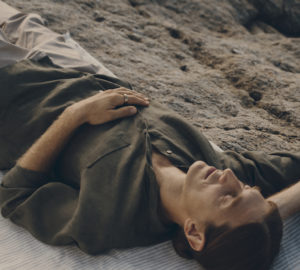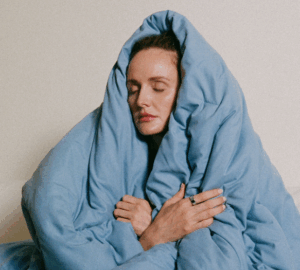Your body performs its daily functions with a specific, choreographed routine–your circadian rhythm. Circadian refers to your body’s innate 24-hour cycle based on the pattern of the sun. Your rhythm is a series of physical and chemical changes that occur based on your internal clocks.
Your circadian rhythm is genetically hardwired and influences when your energy levels, hunger, and alertness. You may not realize it, but you often feel best when your lifestyle aligns with your body’s natural rhythm.
Circadian Preferences
Your internal clocks are unique. Your body has a specific preference, or “chronotype,” for how your circadian rhythm aligns with the sun’s daily pattern. If your body is naturally more active in the morning, your chronotype is a “lark” or “early bird.” If your body is more alert in the evenings, your chronotype is a “night owl.” Your type determines when your body executes certain routines:
- Temperature: Your core body temperature drops near your optimal bedtime and rises again just before you wake. Night owls typically lag 2-3 hours behind early birds.
- Melatonin: Your melatonin levels begin to increase a few hours before your ideal bedtime. Night owl melatonin levels typically increase 2-3 hours after those of early birds.
- Cortisol: Your body initiates a rush of cortisol to jumpstart your day. Early birds receive a larger influx that arrives earlier in the morning.
- Growth Hormone: When your circadian rhythm is aligned, a large dose of growth hormone is released in time for nighttime repairs, soon after you fall asleep. If you’re out of circadian alignment, this may occur at the wrong time.
All living organisms have circadian rhythms, however, categorizing them into distinct types is still a relatively new concept. Chronobiologists are actively exploring whether populations that live without electricity show additional chronotype diversity. In the meantime, the consensus is that the population is 40% early birds, 30% night owls, and the rest are somewhere in between.
Although you can’t change your chronotype, tools like Oura can help you identify your type to better align your lifestyle with your body’s optimal sleep pattern.
Circadian Misalignment
While your body can operate outside of its ideal rhythm, there are health consequences, beyond feeling hangry or struggling to stay awake in class. If your lifestyle is chronically misaligned with your circadian rhythm, it can negatively impact your immune, reproductive, gastrointestinal, endocrine (hormone), and cardiovascular systems. Even getting a full night’s sleep may result in a poor distribution of sleep stages if your sleep period occurs at a suboptimal time for your chronotype. Aligning with your chronotype improves your chances of getting enough deep and REM sleep.
Beyond your personal circadian alignment, it’s important to recognize that society is skewed in favor of early birds. Early school and work start times put night owls at a biological disadvantage. Their natural wake drive doesn’t align with a typical schedule. During the week, night owls accumulate considerable sleep debt that they are unable to recover from, even if they sleep longer on weekends. The same effects are evident when circadian rhythms are disrupted by shift work.

Ideal Bedtime
Similar to how the sun rises each morning, your body plays out your circadian rhythm, whether or not you sleep. If you want to optimize your sleep, try to match your bedtime consistently with your body’s natural rhythm. Always keep in mind—you are unique, and so are your rhythms.
Look for these positive signs to spot when you’re aligned with your circadian rhythm:
- You had a full night’s sleep (7-9 hours).
- You fall asleep in a short period of time (5-20 min).
- You aren’t restless throughout the night.
- You get 20-25% REM sleep.
- You get 15-20% Deep Sleep.
- You wake up feeling well-rested.
If you want to identify your circadian rhythm more quickly, say goodbye to your alarm for a few days—or a week if you can—and observe your body’s natural wake time.
You can also try resetting your body by trading in your bedside lamp for the sun’s natural pattern and go camping for a weekend. If you’re feeling truly adventurous, you could even follow in the footsteps of early sleep researchers and try living in a cave!
References
- Walker, M. (2017). Why we sleep: Unlocking the power of sleep and dreams. Simon and Schuster.
- Lack, Leon, Michelle Bailey, Nicole Lovato, and Helen Wright. “Chronotype differences in circadian rhythms of temperature, melatonin, and sleepiness as measured in a modified constant routine protocol.” Nature and science of sleep 1 (2009): 1. (link)
- Bailey, Sandra L., and Margaret M. Heitkemper. “Circadian rhythmicity of cortisol and body temperature: morningness-eveningness effects.” Chronobiology international 18, no. 2 (2001): 249-261. (link)
- Kudielka, Brigitte M., Ilona S. Federenko, Dirk H. Hellhammer, and Stefan Wüst. “Morningness and eveningness: the free cortisol rise after awakening in “early birds” and “night owls”.” Biological psychology 72, no. 2 (2006): 141-146. (link)
- Cauter, Eve Van, Laurence Plat, and Georges Copinschi. “Interrelations between sleep and the somatotropic axis.” Sleep 21, no. 6 (1998): 553-566. (link)
- Scheer, Frank AJL, Michael F. Hilton, Christos S. Mantzoros, and Steven A. Shea. “Adverse metabolic and cardiovascular consequences of circadian misalignment.” Proceedings of the National Academy of Sciences 106, no. 11 (2009): 4453-4458. (link)
- Wright Jr, Kenneth P., Amanda L. Drake, Danielle J. Frey, Monika Fleshner, Christopher A. Desouza, Claude Gronfier, and Charles A. Czeisler. “Influence of sleep deprivation and circadian misalignment on cortisol, inflammatory markers, and cytokine balance.” Brain, behavior, and immunity 47 (2015): 24-34. (link)
- Roenneberg, Till, Anna Wirz-Justice, and Martha Merrow. “Life between clocks: daily temporal patterns of human chronotypes.” Journal of biological rhythms 18, no. 1 (2003): 80-90. (link)
- Stothard, Ellen R., Andrew W. McHill, Christopher M. Depner, Brian R. Birks, Thomas M. Moehlman, Hannah K. Ritchie, Jacob R. Guzzetti et al. “Circadian entrainment to the natural light-dark cycle across seasons and the weekend.” Current Biology 27, no. 4 (2017): 508-513. (link)
- Erren, T. C. (2018). A chronology of chronobiology. Chronobiology and Sleep, (113), 32.










